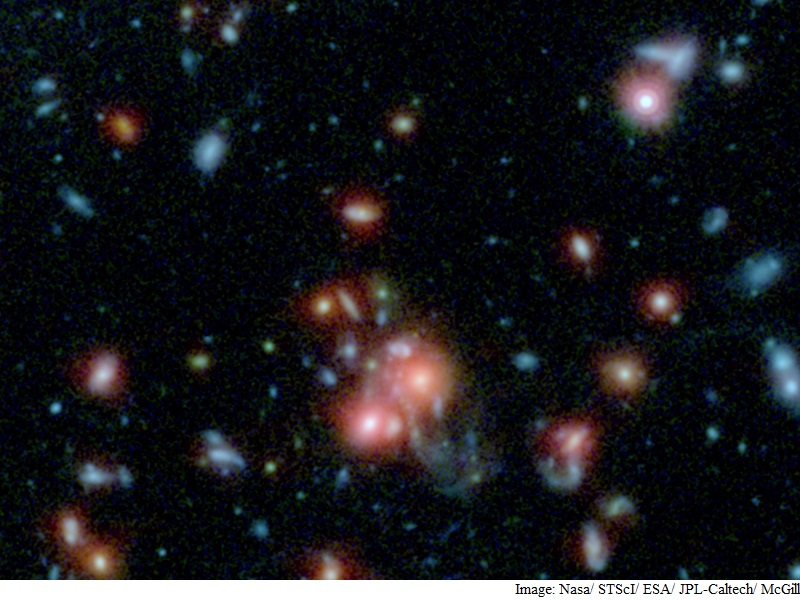
In a rare find, an international team of astronomers has discovered a gargantuan galaxy cluster with a core bursting with new stars – churning out 800 new stars per year – while our Milky Way galaxy forms two stars per year at the most!
The discovery is the first to show that gigantic galaxies at the centre of massive clusters can grow significantly by feeding off gas stolen from other galaxies.
The giant galaxy at the heart of a cluster named SpARCS1049+56 seems to be forming new stars at an incredible rate.
The SpARCS1049+56 cluster is so far away that its light took 9.8 billion years to reach us.
It houses at least 27 galaxies and has a combined mass equal to 400 trillion Suns.
Galaxy clusters are vast families of galaxies bound together by gravity.
Our own galaxy, the Milky Way, resides within a small galaxy group known as the Local Group, which itself is a member of the massive Laniakea supercluster.
“We think the giant galaxy at the centre of this cluster is furiously making new stars after merging with a smaller galaxy,” explained Tracy Webb from McGill University in Montreal, Canada.
The galaxy was initially discovered using Nasa’s Spitzer Space Telescope and the Canada-France-Hawaii Telescope, located on Mauna Kea in Hawaii.
Follow-up observations using the Nasa/ ESA Hubble Space Telescope allowed the astronomers to explore the galaxy’s activity.
“The Spitzer data showed us a truly enormous amount of star formation in the heart of this cluster, something that has rarely been seen before, and certainly not in a cluster this distant,” commented co-author Adam Muzzin from University of Cambridge.
Galaxies at the centres of clusters are usually made of stellar fossils – old, red or dead stars.
The new discovery is one of the first known cases of a wet merger at the core of a galaxy cluster.
Hubble had previously discovered another closer galaxy cluster containing a wet merger but it was not forming stars as vigorously.
Other galaxy clusters grow in mass through dry mergers, or by siphoning gas towards their centres.
The astronomers now aim to explore how common this type of growth mechanism is in galaxy clusters.
[“source-gadgets.ndtv”]







